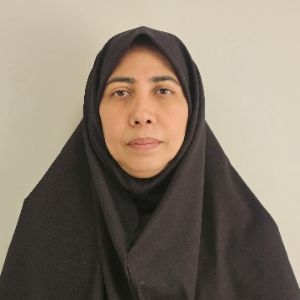Title : Evaluation of the response of some common cultivars and promising lines of rice to salinity stress
Abstract:
Salinity is one of the limiting factors for rice cultivation all over the world. In the conditions of salinity stress, ion poisoning (due to the presence of ions such as sodium and chlorine), osmotic stress and malnutrition limit the growth of the plant and disrupt the metabolic balance of the cell and create oxidative stress. Rice with 3dS/m tolerance threshold is one of the most sensitive plants to salinity. This plant is relatively tolerant to salinity in the stages of germination, tillering and maturity, but it is sensitive to salinity in the seedling and reproductive stages. Evaluation, screening and identification of rice genotypes tolerant to salinity stress in order to introduce and use in saline soils and using them in breeding programs are important. It is obvious that the production and use of stress-tolerant cultivars can reduce yield loss in current saline lands. In order to evaluate tolerance to salinity, 18 new genotypes of rice, including new improved cultivars and advanced breeding lines, along with international genotypes tolerant to salinity in the vegetative and reproductive periods (478 FL, 266-TCCP and sensitive 29 IR) and Hashemi and Tarem local cultivars were screened at seedling stage. In order to screen them, the seeds of the studied genotypes were placed in hydroponic culture conditions after germination and the two-week-old seedlings were exposed to 50 and 100 mM NaCl salinity (monitored every week). Evaluation after 8 days of morphological and physiological traits showed that Kian, Tolo and Anam genotypes showed more tolerance to 100 mM stress than the tolerant control genotypes. Among the data measured in this research, only important traits such as the dry weight of roots and shoots and the ratio of sodium to potassium in leaves and roots are given in this report. The highest dry weight of shoot was measured in TCCp, Kian, and the lowest in Barkat and AR1. In addition, the highest root weight was reported in Kian, Tolo and Anam and the lowest in Khazar and Tarem. In normal conditions, there is no significant difference between stress and control, but in stress conditions of 100 mM, the ratio of sodium to potassium in some genotypes such as Tarem, Hashemi and Khazar is even higher than the sensitive variety IR29. In Keshvari, Kohsar, Tolo, Gilane and Anam cultivars, this ratio reaches its minimum value in aerial parts.
Audience Take Away Notes:
- We hypothesized that this data could use as effective screening methods aimed at pinpointing tolerant genotypes
- These methods could significantly enhance crop establishment and early plant growth, particularly in salt stress situation
- Further investigation of this research could be pursued by students specializing in agricultural, physiology especially environmental stress studies



